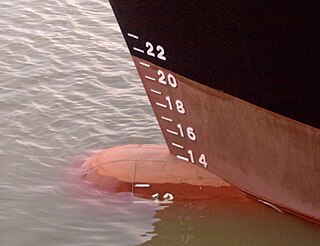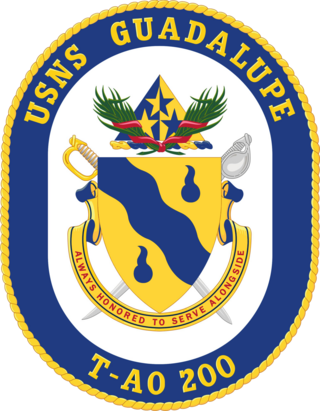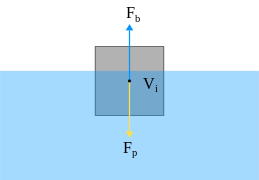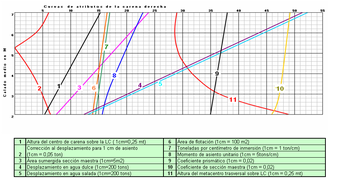
A hull is the watertight body of a ship, boat, submarine, or flying boat. The hull may open at the top, or it may be fully or partially covered with a deck. Atop the deck may be a deckhouse and other superstructures, such as a funnel, derrick, or mast. The line where the hull meets the water surface is called the waterline.

A ship is a large vessel that travels the world's oceans and other navigable waterways, carrying cargo or passengers, or in support of specialized missions, such as defense, research and fishing. Ships are generally distinguished from boats, based on size, shape, load capacity and purpose. Ships have supported exploration, trade, warfare, migration, colonization, and science. Ship transport is responsible for the largest portion of world commerce.

Naval architecture, or naval engineering, is an engineering discipline incorporating elements of mechanical, electrical, electronic, software and safety engineering as applied to the engineering design process, shipbuilding, maintenance, and operation of marine vessels and structures. Naval architecture involves basic and applied research, design, development, design evaluation (classification) and calculations during all stages of the life of a marine vehicle. Preliminary design of the vessel, its detailed design, construction, trials, operation and maintenance, launching and dry-docking are the main activities involved. Ship design calculations are also required for ships being modified. Naval architecture also involves formulation of safety regulations and damage-control rules and the approval and certification of ship designs to meet statutory and non-statutory requirements.
The long ton, also known as the imperial ton or displacement ton, is a measurement unit equal to 2,240 pounds (1,016.0 kg). It is the name for the unit called the "ton" in the avoirdupois system of weights or Imperial system of measurements. It was standardised in the 13th century. It is used in the United States for bulk commodities.

Deadweight tonnage or tons deadweight (DWT) is a measure of how much weight a ship can carry. It is the sum of the weights of cargo, fuel, fresh water, ballast water, provisions, passengers, and crew.

A tanker is a ship designed to transport or store liquids or gases in bulk. Major types of tankship include the oil tanker, the chemical tanker, cargo ships, and a gas carrier. Tankers also carry commodities such as vegetable oils, molasses and wine. In the United States Navy and Military Sealift Command, a tanker used to refuel other ships is called an oiler but many other navies use the terms tanker and replenishment tanker. Tankers were first developed in the late 19th century as iron and steel hulls and pumping systems were developed. As of 2005, there were just over 4,000 tankers and supertankers 10,000 LT DWT or greater operating worldwide.

A vessel's length at the waterline is the length of a ship or boat at the level where it sits in the water. The LWL will be shorter than the length of the boat overall as most boats have bows and stern protrusions that make the LOA greater than the LWL. As a ship becomes more loaded, it will sit lower in the water and its ambient waterline length may change; but the registered L.W.L is measured from a default load condition.

USNS Guadalupe (T-AO-200) is a Henry J. Kaiser-class underway replenishment oiler operated by the Military Sealift Command to support ships of the United States Navy.
The stability conditions of watercraft are the various standard loading configurations to which a ship, boat, or offshore platform may be subjected. They are recognized by classification societies such as Det Norske Veritas, Lloyd's Register and American Bureau of Shipping (ABS). Classification societies follow rules and guidelines laid down by International Convention for the Safety of Life at Sea (SOLAS) conventions, the International Maritime Organization and laws of the country under which the vessel is flagged, such as the Code of Federal Regulations.

USNS Triumph (T-AGOS-4) is a Stalwart-class ocean surveillance ship formerly of the United States Navy. She was struck from the Naval Vessel Register in 1995. On 1 October 2012 the ship was disposed of by Navy title transfer to the Maritime Administration. As of May 2015, Triumph was held as a reserve asset for spare parts for sister ships General Rudder and State of Michigan.

Prevail (IX-537) is a modified Stalwart-class auxiliary general ocean surveillance ship (AGOS) of the United States Navy previously operated by the U.S. Military Sealift Command as T-AGOS 8. Prevail was reclassified as Unclassified Miscellaneous (IX) in October 2003 and is unofficially referred to as TSV-1. In this context, TSV stands for Training Support Vessel, and should not be confused with the U.S. Army's USAV Spearhead Theater Support Vessel initiative.

The draft or draught of a ship is a determined depth of the vessel below the waterline, measured vertically to its hull's lowest—its propellers, or keel, or other reference point. Draft varies according to the loaded condition of the ship. A deeper draft means the ship will have greater vertical depth below the waterline. Draft is used in under keel clearance calculations, where the draft is calculated with the available depth of water to ensure the ship can navigate safely, without grounding. Navigators can determine their draught by calculation or by visual observation.

USNS Tippecanoe (T-AO-199) is a Henry J. Kaiser-class underway replenishment oiler operated by the Military Sealift Command (MSC) to support ships of the United States Navy. She serves in the United States Pacific Fleet. Tippecanoe, the thirteenth ship of the Henry J. Kaiser class, was laid down at Avondale Shipyard, Inc., at New Orleans, Louisiana, on 19 November 1990 and launched on 16 May 1992. She entered non-commissioned U.S. Navy service under the control of the MSC with a primarily civilian crew on 8 February 1993.

The Hatsuharu-class destroyers were a class of Imperial Japanese Navy destroyers in the service before and during World War II. The final two vessels in the class, completed after modifications to the design, are sometimes considered a separate "Ariake class".

Net tonnage is a dimensionless index calculated from the total moulded volume of the ship's cargo spaces by using a mathematical formula. Defined in The International Convention on Tonnage Measurement of Ships that was adopted by the International Maritime Organization in 1969, the net tonnage replaced the earlier net register tonnage (NRT) which denoted the volume of the ship's revenue-earning spaces in "register tons", units of volume equal to 100 cubic feet (2.83 m3). Net tonnage is used to calculate the port duties and should not be taken as less than 30 per cent of the ship's gross tonnage.

USNS Kanawha (T-AO-196) is a Henry J. Kaiser-class fleet replenishment oiler of the United States Navy in non-commissioned service in the Military Sealift Command.

The Chidori-class torpedo boat was an Imperial Japanese Navy class of torpedo boats that were built before and served during the Second World War. The design initially proved to have too much armament for its small displacement, and the capsizing of Tomozuru (友鶴) shortly after completion in heavy weather resulted in a scandal which called into question the basic design of many Japanese warships of the time. After extensive modification, the class became satisfactory sea-boats and saw service in the Battle of the Philippines and the Dutch East Indies campaign as escorts and continued in that role for the rest of the war. Three were sunk during the war and the fourth was seized by the British at Hong Kong after the end of the war, where it was scrapped later.
Ship measurements consist of a multitude of terms and definitions specifically related to ships and measuring or defining their characteristics.

The Kaivan is a class of large patrol craft operated by the Islamic Republic of Iran Navy. They ships in the class are modified versions of the American Cape-class vessels, built by the United States Coast Guard Yard in the 1950s.




















